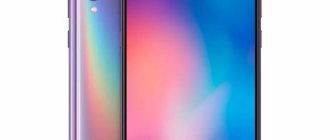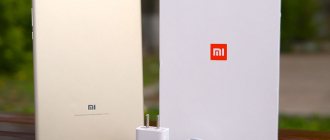Specifications of Mi 8 Explorer Edition:
- Network: GSM (Band 2, 3, 5, 8), CDMA (BC0, BC1, BC6, BC10), WCDMA (Band 1, 2, 3, 4, 5, 6, 8, 9, 19), TD-SCDMA (Band 34, 39), FDD-LTE (Band 1, 2, 3, 4, 5, 7, 8, 12, 13, 17, 18, 19, 20, 25, 26, 27, 28, 29, 30) , TDD-LTE (Band 34, 38, 39, 40, 41)
- Platform (at time of announcement): Android 8.1 Oreo with MIUI 10
- Display: 6.21″, 18.7:9, 2248 x 1080 pixels, HDR, 600 nits (usually 430 nits), 402 ppi, 60,000:1, DCI-P3 color gamut, AOD, AMOLED
- Camera: dual, 12 MP wide-angle (Sony IMX363, 1.4 µm, f/1.8) + 12 MP telephoto (Samsung S5K3M3, 1 µm, f/2.4), 4-axis OIS, Dual Pixel autofocus, 6 lenses, AI , bokeh, LED flash of different tones, video recording [email protected] , [email protected] , [email protected]
- Front camera: 20 MP, f/2.0, 1.8 µm (TetraCell), AI, HDR, 1080p video recording
- Processor: 8 cores, 4 x 2.8 GHz + 4 x 1.7 GHz, 10 nm, Qualcomm Snapdragon 845
- Graphics chip: Adreno 630 710 MHz
- RAM: 6 | 8 GB LPDDR4x Dual Channel
- Internal memory: 64/128/256 GB | 128 GB UFS 2.1
- Memory card: no
- Dual GPS, A-GPS, GLONASS, Beidou
- Bluetooth 5.0
- Wi-Fi (802.11a/b/g/n/ac), 2.4/5 GHz, Wi-Fi Direct, 2×2 MIMO
- NFC
- USB Type-C
- Fingerprint scanner, in-screen fingerprint scanner and Face ID (Mi8 EE only)
- Battery: 3400 mAh | 3000 mAh, fast charging Quick Charge 4.0+ (QuickCharge 3.0 18W included)
- Dimensions: 154.9 x 74.8 x 7.6 mm
- Weight: 175g | 177 g
Xiaomi Mi 8 Explorer Edition smartphone review: Xiaomi Mi 8 Pro, is that you?
Table of contents
- Introduction
- Specifications
- Packaging and equipment
- Appearance and design
- Display
- Software and firmware
- Hardware platform and performance
- Safety
- Multimedia
- Wireless Interfaces and Communications
- File system
- Battery life
- Camera
- Comparison with competitors
- Conclusion
Introduction
The new generation of Xiaomi flagship smartphones could not go unnoticed, and there are a number of reasons for this.
Firstly, everyone who is at least a little interested in the news of the mobile market follows the new products of the brand. Secondly, the devices actually turned out to be interesting. The updated lineup offers several variations, and we have already studied one of them – Xiaomi Mi 8. Thanks to the Gadget Page, our attention was given to one of the most interesting versions – Xiaomi Mi 8 Explorer Edition. It has a fingerprint scanner under the display, and the appearance of the model can give odds to many devices, including related Xiaomi Black Shark and Pocophone F1.
There is also the other side of the coin - the smartphone is produced for the Chinese market and runs the Chinese version of the software. Considering the latest innovations from Xiaomi regarding the installation of global versions of software on models designed for the Chinese market, this may create serious inconvenience for users.
However, it's not all bad. About a month ago, the Xiaomi Mi 8 Pro model was announced. In fact, this is the same Mi 8 Explorer Edition, but for sale in different countries, including Russia. Therefore, our review of this smartphone can be perceived as a preliminary acquaintance with the Pro version, because the differences will only be in shell modifications.
announcements and advertising
2080 Super Gigabyte Gaming OC for 60 rubles.
Compeo.ru - the right comp store without any tricks
RTX 2060 becomes cheaper before the arrival of 3xxx
Ryzen 4000
series included in computers already in Citylink
The price of MSI RTX 2070 has collapsed after the announcement of RTX 3xxx
Core i9 10 series is half the price of the same 9 series
The price of memory has been halved in Regard - it’s more expensive everywhere
Xiaomi Mi 8 Explorer Edition review: technical specifications
| Device type | Smartphone |
| Model | Xiaomi Mi 8 Explorer Edition |
| CPU | Qualcomm Snapdragon 845 |
| Video processor | Adreno 630 |
| operating system | Android 8.1 |
| Memory, GB | 8 RAM; 128 ROM |
| Screen | 6.21″ AMOLED, 2248 x 1080 |
| Cameras, Mpix | 12.0+12.0 + 20.0 |
| Number of SIM cards, pcs. | 2, Nano-SIM |
| MicroSD support | No |
| Wireless interfaces | Wi-Fi; Bluetooth; NFC |
| GPS/aGPS/GLONASS | Yes Yes Yes |
| Battery, mAh | 3 000 |
| Dimensions, mm | 154.9 x 74.8 x 7.6 |
| Weight, g | 177 |
| price, rub. | ~50 000 |
The price of Mi 8 Explorer Edition cannot be called low. Interestingly, the expected cost of Mi 8 Pro in Russia is just over forty thousand. It turns out that the Chinese version is more expensive? Yes, and the reasons for this are the limited production and the cheating of resellers. Another factor in favor of waiting for the Russified model.
Review of Xiaomi Mi 8 Explorer Edition: packaging and accessories
The smartphone comes in a large flat box of an unusual design. On the outside, it has a cardboard cover with a large number “8” on the front side.
The reverse side is empty, with only identifying information in the corner corresponding to a specific instance.
The box itself is plastic with a transparent lid, and under it you can see the smartphone itself. In this packaging option, its unusual appearance looks especially advantageous; it literally attracts attention.
The delivery set is standard. The only things of interest are the stylish color of the charging cable and the color of the headphone adapter, which stands out from the general color scheme.
Among other things, the manufacturer has provided the new product with a transparent silicone case. It is thin and does not affect the overall appearance of the smartphone too much. True, over time the silicone turns yellow, and the appearance will become less intriguing.
So, the Xiaomi Mi 8 Explorer Edition includes:
- Power adapter;
- USB Type C cable;
- USB Type C – AUX adapter;
- Transparent silicone case;
- A paperclip key for removing the SIM card slot.
The packaging turned out to be atypical and of high quality; it arouses interest and draws attention to the smartphone. The manufacturer should be praised for this. Except that the white headphone adapter caused some misunderstanding. Why make it white if everything else is dark?
Xiaomi Mi 8 Explorer Edition review: appearance and design
Structurally, we have a classic candy bar with a touch screen. As you would expect from a flagship, the body is made of metal and glass. The rigidity is very high, the structure perfectly resists bending or twisting loads.
The display is elongated and matches the proportions of the body as much as possible to minimize the side frames. But it was not possible to do without a wide protrusion at the top.
The bottom frame is devoid of any structural elements. The control keys are on-screen, if you use them at all.
The ends are united by a single metal frame, polished to the smoothness of glass. It widens slightly on the short sides and narrows on the long sides.
At the top you can see plastic inserts for antennas and a hole for the microphone of the noise reduction system. The bottom edge is occupied by a USB Type C port and the main speaker grilles with a conversational microphone. It has plastic inserts. An AUX port is not provided; instead, an adapter is included in the package.
The configuration of elements on the left and right is typical for most modern smartphones. Something interesting to note is the power key, highlighted in red.
The developers paid the most attention to the back cover, and it paid off. It is made transparent, with a design backing that imitates the hardware component. Even though this is an imitation, one cannot help but note the high level of detail and attention to every detail.
At the top of the cover there is a dual main camera module with LED flash. Does everyone understand where the engineers got their inspiration?
But all this becomes unimportant when you see the design of the substrate. At first you just look at small elements and constantly find something new for yourself.
The lower part is devoid of any structural elements. All inscriptions and the manufacturer's logo are placed under the lid.
In this modification, the manufacturer relied on the appearance of the smartphone and paid maximum attention to it. The result was positive. The appearance of the case is unusual and attractive, and no complex technical solutions were required. A detailed backing coupled with a transparent lid was also enough.
By the way, the Xiaomi Mi 8 Pro model will be available in several color variations. The younger modification will receive the usual black color, and the older one will have two unusual options: with a transparent lid (like the hero of the review) or with a gradient color scheme.
There are no complaints about the quality of the case. The assembly is at a high level, there are no creaks or backlashes.
Xiaomi Mi 8 Explorer Edition review: display test
The display diagonal is 6.21″. It is based on Samsung's SuperAMOLED matrix. The Korean giant has succeeded in developing matrices of this type and achieved good results.
The resolution is 2248 x 1080 pixels, which provides a pixel density of 402 ppi. It is worth paying tribute to the manufacturer for the decision not to increase the resolution, stopping at enough for comfortable use. It will not be possible to examine individual points, but unnecessary energy consumption was avoided.
The display is protected by tempered glass with an oleophobic coating. Due to the rounding around the perimeter, a feeling of solidity of the glass front panel and the metal frame at the ends is created. Although the perimeter of the glass is surrounded by a thin plastic frame, which acts as a damper in case of falls.
Traditionally, for SuperAMOLED matrices, black is the reference color, and white has a slight gray tint. However, this does not in any way affect the sensations during operation.
Using a colorimeter, we measured the backlight brightness and tested the quality of the factory color calibration.
| Brightness level, % | White brightness, cd/m2 | Black brightness, cd/m2 | Contrast, x:1 |
| 100 | 415 | 0 | ∞ |
| 75 | 186 | 0 | ∞ |
| 50 | 93 | 0 | ∞ |
| 25 | 33 | 0 | ∞ |
| 0 | 2 | 0 | ∞ |
The brightness reserve is quite good. High-quality light filters are used to ensure comfortable readability of the display regardless of the intensity of ambient light.
The graphs formed a single line and only slightly deviated from the reference value. The indicator is good.
The graphs are stable and located close to each other. The red graph has moved a little further, but this will not have a noticeable effect on the quality of color rendering.
The color temperature is increased by about 1000K. This is a typical situation for modern smartphones; it is impossible to visually notice the deviation.
And, as is typical for SuperAMOLED displays, there is a traditional excess of green tones. The situation is better than it was with the first matrices of this type, but it is not perfect.
The points of the gray wedge were grouped at a short distance from the delta boundaries. Parasitic shades will not create discomfort for the user.
If necessary, you can manually adjust the color temperature and contrast of the image. This will allow you to achieve the most comfortable color rendering.
The use of the Samsung matrix benefited the entire device. It uses a high-quality display with modern characteristics and high quality workmanship. They also did a good job of adjusting the color rendering, achieving the most natural display possible. Among other strengths of this type of display, we note the reference black color display and low power consumption.
Xiaomi Mi 8 Explorer Edition review: software and firmware
Traditionally, Xiaomi models are equipped with the proprietary MIUI shell, based on the Android 8.1 operating system.
Over-the-air update function supported.
Since the device is intended for sale in China, the interface only supports Chinese and English. In turn, for markets in other countries (including Russia), the Xiaomi Mi 8 Pro model will operate under the global version.
The interface design is familiar to us from other Xiaomi smartphones; it is clear and concise. All shortcuts are placed on desktops; there is no separate application menu.
To the left of the main desktop there is an additional panel with notifications, reminders and notes.
Instead of the usual touch control keys, you can use gestures, freeing up display space. Gesture controls are similar to the Pocophone F1 and are very convenient.
The Chinese version of the firmware is distinguished not only by the absence of the Russian language and Google services, but also by the presence of a large number of Chinese applications that lack both an English-language interface and practical use outside of China.
In the Security application, you can monitor the number of unnecessary temporary files, as well as manage energy consumption.
In the Mi Wallet application, you can save bank cards and pay with them using the NFC module. But the support of this system in the Russian Federation raises questions (although we will return to the operation of the NFC module later).
A large number of Chinese applications with a complete lack of English take up memory space without bringing any benefit. You can only remove third-party applications, but the manufacturer’s software will remain in the standard firmware forever.
The topic of installing global firmware is already actively covered on the w3bsit3-dns.com forum, along with instructions for restoring a smartphone from a “bricked” state due to the installation of the global version of the firmware on the Chinese version of the device. This instruction does not just involve pressing a few keys; it will require disassembling the smartphone with all the ensuing risks and consequences. And the possibility of bringing him back to life in this way is in question.
Considering the general trend of suppressing the ability to “manually” install a global version of firmware on smartphones for the Chinese market, buying an expensive gadget looks like a controversial financial investment. And even if now a way to install Russian-language firmware has been found, where is the guarantee that in a week or month it will still be available and relevant?
What there were no problems with was the installation of Google Play services. So, if you have basic knowledge of English and are willing to put up with other problems with Chinese firmware, you can stay with the standard software.
It is precisely because of the large number of difficulties with operating a smartphone intended for the Chinese market in Russian realities that we draw a parallel with the Xiaomi Mi 8 Pro model. In fact, this is the same smartphone, but in a global version - with support for the Russian language, Google services and the absence of Chinese services. Such a device is much more interesting to buy, especially considering the expected cost.
Mi8 Explorer design
Last year, many people really liked the Mi 6 Pro Ceramic design. But Mi8 Explorer Edition is a significant step forward in all respects. While the Mi 6 Pro features a 5.15″ screen and a ceramic back cover, the Mi 8 Explorer Edition has a 6.21″ screen diagonal and a transparent back cover made of glass. No one has ever seen this before! A common feature of the Mi 6 Pro and Mi 8 Explorer Edition is that they glide on a flat surface, although not as much as the Mi 5 Ceramic. The design (in particular, the cutout) is copied from the design of the iPhone X, as is the protruding dual main camera. The ratio of display to body dimensions is even better than that of Mi MIX 2S (83.8%). This year, Xiaomi moved to the production of the Explorer Edition in the Ceramic Edition series, which was expected after the release of Mi 5. With a transparent glass back, the new series does not disappoint.
Xiaomi Mi 8 Explorer Edition is the most interesting flagship of this year. It's definitely worth buying
Early this morning, Xiaomi held a presentation of new devices in China. The company showed new Mi-series smartphones, the Mi Band 3 fitness bracelet, the Standalone VR helmet and an inexpensive 4K TV. Each new product is interesting in its own way and will definitely find its buyers, but among these gadgets, we liked the flagship smartphone Mi 8 Explorer Edition the most.
Mi 8 EE is one of the brightest and most interesting representatives of the mobile device market, which currently has no analogues. The uniqueness of the smartphone can be explained by four points:
- Face ID
. Mi 8 EE became the first Android smartphone to receive a 3D face scanner. Like the iPhone X, the module is equipped with a camera system, a dot projector and an IR emitter. According to Xiaomi, Face ID is much more reliable than conventional fingerprint scanners and correctly recognizes the user’s face in 99.9% of cases; - In-screen fingerprint scanner
. Yes, the new Xiaomi product was not the first smartphone with a fingerprint sensor integrated into the display, but the company promises that its development is many times better than analogues from other manufacturers; - Characteristics
. The Chinese stuffed the Mi 8 EE to the maximum: Snapdragon 845, 8 GB of RAM and 256 GB of flash memory, Bluetooth 5.0, dual GPS module with an accuracy of 30 cm and support for QuickCharge 4+. This all sounds even cooler when you find out the cost of the device; - Price
. In China, the new product will be sold for 3,699 yuan – that’s 36,000 rubles. It turns out that the top-end smartphone of 2020 may not cost 50, 60 or 90 thousand rubles. Mi 8 EE is a future bestseller.
The appearance of the smartphone is also one of its trump cards. The display's notch may not be everyone's cup of tea, but the clear glass cover is sure to entice the most discerning users. As it turned out, what is visible under the transparent panel is not real components, but a 3D sticker that creates a realistic illusion, but do you care? The main thing is that it is beautiful.
Xiaomi also hasn’t forgotten fans of mobile photography: the gadget has a dual main camera with artificial intelligence functions, 2x optical zoom and an advanced stabilization system. DxOMark specialists have already assessed the capabilities of the Mi 8 Explorer Edition camera and gave it 105 points in terms of photos - more than the Pixel 2 and iPhone X.
And finally, the gadget received Animoji support! The company didn’t bother coming up with its own name and appearance for the masks, and simply copied the idea from Apple, but that doesn’t matter. Animoji is just a stupid addition to the capabilities of a cool smartphone that everyone will forget about tomorrow.
Of course, if you are choosing a new smartphone right now and are at least somewhat limited in budget, then you should wait a week and buy yourself a Mi 8 Explorer Edition. Sales of the device in China will begin on June 6, after which it will immediately appear on popular trading platforms.
You can wait for the gadget to appear on Russian shelves, but then one of its main features disappears - its attractive price.
In local stores, its price from 35 thousand will suddenly turn into 45 thousand rubles. iG channel in Telegram - t.me/iguides_ru
Equipment
Large box compared to the Mi 8 box.
Inside the box is an acrylic transparent case that emphasizes the transparency of the Mi 8 EE.
Mi 8 EE is beautiful at first sight!
Take a closer look!
Complete set of device delivery!
Back cover, Mi 8 EE, red USB C cable, QC 3 charger, instructions, proprietary clip for removing the SIM card, adapter from USB C to 3.5 mm audio jack.
Greetings from General Manager Lei Jun.
Sound and display
There are high hopes for the display as this is the first time Xiaomi has used Samsung AMOLED. A similar display was used in Mi Note 2, but it was OLED. Stunning Full HD display that displays photos and videos perfectly. The only thing I didn’t like about AMOLED was pixel burn-in, like the flagship Samsung Galaxy series. We watched several movies and we can say that the image is better than on Mi MIX 2S. The sound is simply excellent. The Bluetooth headset also works great. The speaker is quite loud. If you often receive voice messages, you will even have to turn it down so as not to get into an unpleasant situation while listening to them.
Mi 8 Explorer Edition supports the following audio and video formats:
- MP4;
- M4V;
- MKV;
- XVID;
- WAV;
- AAC;
- MP3;
- AMR;
- FLAC;
- A.P.E.
Supports H.265/HEVC (Main profile), H.264 (Baseline/Main/High profile), MPEG4 (Simple profile/ASP) and other video formats, PCM, AAC/AAC+/eAAC+, MP3, AMR-NB and WB. FLAC, APE, WAV and other audio formats Support HDR10 when playing video content.
Playing games on such a flagship is a pleasure. We ran all the powerful games on this device without any problems. We played NBA 2k18 and PUBG at maximum speed and everything was smooth.
Snapdragon 845
The Mi 8 Explorer Edition is one of the few devices that uses the latest Qualcomm processor - namely the octa-core Snapdragon 845 with a frequency of up to 2.8 GHz. Now, coupled with the powerful Adreno 630 and 8GB RAM, you can enjoy all the latest in the gaming market, not to mention the fact that it can even run games with high graphical requirements like PUBG and NBA 2K18. The latest flagship with a Qualcomm chip inside first appeared in MI MIX 2S. Then it was used in Black Shark, and now the developers have inserted it into the very heart of the Mi 8 Explorer Edition. We conducted several tests of the device and as a result, nothing slowed down, and all applications on the Mi 8 Explorer Edition launched without delay; Multitasking mode ensures smooth operation. This chip supports 64-bit architecture, which ensures very fast processing of processes. Thanks to good graphics, smooth multitasking and fast processing, the Snapdragon 845 can be considered one of the best after the 835 in last year's flagship.
The Mi 8 Explorer Edition scored 288,270 points in AnTuTu testing (while the Mi8 scored 271,770 points) straight out of the box. But the flagship must reach the stated 301k score. We will probably also test it on MIUI 10, while upon unpacking it was discovered that MIUI 9.6 was installed on the device.
Xiaomi Mi 9 EE – the most powerful in 2020?
Top smartphone manufacturers have made it a fashion to release not just one, but several versions of their flagship models. For example, next to the Huawei P20 are the Huawei P20 Pro and Huawei P20 Lite, OnePlus has a pumped-up branch with the prefix “T” (Turbo), Samsung’s top-end Galaxy are available in both the basic version and the “Plus” modification. Xiaomi has also adopted this feature, so in 2020 we will see three versions of Xiaomi Mi 9 at once: the simplified Xiaomi Mi 9 SE, the basic Xiaomi Mi 9 and the version for power connoisseurs - Xiaomi Mi 9 Explorer Edition. We will talk about the latest smartphone in more detail in this review. There is less than a day left before its official announcement, so there is plenty of information about this gadget.
Internet
Mi 8 Explorer Edition supports 17 different LTE frequency bands (two more than Mi 8). The process of switching to the LTE network in the settings is very simple. The device also supports Dual 4G mode, so both SIM cards can receive 4G at the same time. It is possible to use mobile Internet on a second SIM card during a call on the LTE network. The device also supports 4G+ and carrier aggregation technology (if your network provider provides this feature). Wireless Internet: Wi-Fi supports a/b/g/n/ac standards, and also features uninterrupted operation and Wi-Fi Direct function. The wireless screen mirroring function is available via the Miracast protocol; The access point also works great. The device supports Bluetooth 5.0, GPS and GLONASS, as well as NFC for Mi Pay and Android Pay. NFC allows you to send data to another user simply by touching your phones. You can also transfer data from older phones using Mi Mover without any problem.
Supported Standards:
GSM B2 / B3 / B5 / B8 CDMA 1X/EVDO BC0 WCDMA B1 / B2 / B4 / B5 / B8 TD-SCDMA B34 / B39 TD-LTE B34 / B38 / B39 / B40 / B41 (120 MHz) FDD-LTE B1 / B2 / B3 / B4 / B5 / B7 / B8 / B12 / B17 / B20 Quad-channel LTE B41 technology supporting 4x4 MIMO
Wireless technologies
The smartphone provides reception of 17 LTE frequency bands, and full support for 4G networks is implemented. Simultaneous operation of SIM cards in Dual 4G mode is allowed, which allows you to surf the Internet using one card, and receive or make calls on the LTE network using the second card.
The phone is equipped with Wi-Fi and Bluetooth 5.0 wireless controllers, and has an NFC function for Mi Pay and Android Pay. The NFC mode allows you to transfer information between phones that support the wireless data transmission algorithm.
The smartphone is equipped with a special 2-frequency unit that provides switching with GPS and Glonass satellites. The owner needs to install area maps that indicate the current location.
The equipment can be used as a compact navigator; there are functions for plotting a route and choosing a method of movement.
In-screen fingerprint scanner, MiMoji and what's under the back cover
The most interesting detail of the Mi 8 EE is that Xiaomi has integrated an in-display fingerprint scanner for the first time. It performed quickly both during testing and in everyday use. The 3D facial recognition feature allows you to instantly unlock the screen. It works even in dim lighting. Surprisingly, even pitch darkness is not a problem for her thanks to the infrared sensor.
Mimoji is a joke feature with emoticons that can imitate your movements. With it you can record a 10-second video.
Many people have asked whether integrated circuit chips are real or just a design element. At 60x zoom, the adhesions appear real. But after disassembling it turned out that it was just film.
Dual Frequency GPS
This is the first phone in the world to support this technology. Users often face the problem of getting a GPS signal on their phone. The Mi 6 is no exception and the GPS connection often drops out, especially in a tunnel or even on a bridge. This technology is likely to improve GPS connectivity and its accuracy. Compared to Mi 6, Mi 8 determines the location in Google Maps exactly 2 seconds faster.
Mi8 Explorer Camera:
Mi 8 Explorer Edition is equipped with the best camera ever released by Xiaomi. With a DXOMark score of 105, the Mi 8 and Mi 8 Explorer Edition are on par with high-end products like the Samsung Galaxy S9+. Thus, Xiaomi achieved another goal. This camera works great in good lighting and compared to the Mi 6. The device is equipped with two main cameras - Sony IMX 363 and Samsung S5k3m3 - 12 MP.
The cameras also have a built-in 4-axis OIS, which provides excellent shooting of objects in motion. The smartphone is equipped with a 20-megapixel Samsung Sensor S5k3t2 front camera, as well as an additional Omnivision OV7251 camera for facial recognition. With its help, you can take pretty good selfies; Portrait mode with bokeh effect is also available. Manual mode features a 32-second shutter speed and its sensitivity range is 3200. This mode also includes a very simple face recognition feature with an infrared sensor that allows you to recognize faces even in the dark. UHD 4K resolution allows you to shoot very good video.
Give gifts
Fitness bracelet Xiaomi Mi Band 4 Silicone strap as a gift!
2 490 ₽
Fitness bracelet Xiaomi Mi Band 3 Silicone strap as a gift!
990 ₽
Design
Quite strange, but all modifications of Mi 8 have a different design. The SE model is angular, the regular Mi 8 and Mi 8 EE have more rounded edges, but the latter, the Explorer Edition, especially stands out. Initially, this - the most expensive - model attracted the attention of all geeks with its translucent back, which turned out to be surprisingly nice, especially compared to a similar experiment by HTC. Upon closer inspection, the spectacular transparent case turned out to be simply a beautiful imitation. The fans were offended, because, in fact, they tried to deceive them, and Xiaomi representatives are trying to blame everything on a misunderstanding between the parties and hush up the problem. One way or another, we’ll just note that we never received a transparent case. The dimensions of the models differ slightly: 154.9*74.8*7.6 mm for Mi 8 and Mi 8 Explorer Edition versus 147.3*73.1*7.5 mm for Mi 8 SE. Weight is 175 g and 164 g, respectively.
Real photos from Mi 8 Explorer Edition
All pictures were taken with AI and HDR to maximize the quality of the camera without filters.
Mi 8 Explorer Edition is a worthy flagship!
Time to draw conclusions about this stunning flagship. The Mi 8 Explorer is quite different from the Mi 8, especially with the camera, which has passed DxO Mark testing and takes great pictures. This smartphone has taken its place among luxury phones. It's unclear why they switched to AMOLED, even though it is a wonderful display. But pixel burn-in can cause problems in the future. The phone overall looks quite elegant. The notch ruins everything, but you can hide it in the settings in full-screen mode. Without a doubt, it's worth buying a smartphone with a transparent back cover if you have the option.
Unboxing Xiaomi Mi 8 Explorer Edition
Geek is easy to recognize - he is a man who may have a photo of his first smartphone next to the portrait of his beloved in his workplace. As children, these people loved construction sets and almost certainly tried, not unsuccessfully, to open their home TV or tape recorder. These same people will never buy an already assembled computer, but will select the necessary components themselves, and will do it in such a way that the computer will look interesting and harmonious. And it is for such users that Xiaomi has equipped one of its best smartphones with a transparent back cover, and the model is called Xiaomi Mi 8 Explorer Edition. We already had a review of the smartphone, and now we’ll take a look at its embellished version.
The packaging of the Mi 8 Explorer Edition is not the same as the regular version. This smartphone comes in a large black box with a clear plastic base. If this is not a random move, but a hint at the transparent body of the device itself, then the company should be praised for such little things. The kit itself is no different from the usual: a simple silicone case, a headphone adapter, a charger with a detachable cable, a paper clip and documentation. The manufacturer saved money on the headset.
The Explorer Edition stands out from all other versions with its transparent back cover. Under it you can see the carbon fiber on the battery, the motherboard, the chips... in general, all the insides of the smartphone. And it all looks really beautiful and impressive. The rest of the body is black and consists of glass and metal.
But all this visible “filling” under the lid is a dummy. Handsome, no doubt, but a fake. No matter how much Apple is praised for the neat appearance of the insides of its devices, they still won’t look as good as they do here. Moreover, a smartphone for half the price of an iPhone will not have such pretty boards. This is not to mention the technical implementation of such an idea, which would have its own difficulties with, at a minimum, heat transfer.
There is one more difference from the regular version of the smartphone - a fingerprint scanner. At first it may seem that it is not there, but it is there, and it is located under the screen. The scanner works well, and its position is most often highlighted for the user and it is quite easy to find it, as well as get used to the location. But infrared facial scanning has also not disappeared anywhere and works as it should.
Red accents are also visible on the body. These are the power button, frames around the camera lenses, USB-C, a small panel under the cover and the Qualcomm logo. Personally, I like them, because they look quite appropriate and look especially good in tandem with a dark glossy body.
The smartphone is slippery to use. You should be more careful with him, because he is unlikely to be able to withstand a fall. And this is not to mention the fact that damage to such a case can be very noticeable. The complete case will greatly spoil the tactile impressions, so it’s worth looking for a third-party, higher-quality replacement. But the problem is that the case will undermine the whole idea of such a smartphone, and here it is completely tied to the design. There is no difference in size or weight compared to the regular version of Mi 8, except for the added 2 grams (total weight was 177 grams).
Speaking of appearance, Mi 8 is very similar to the iPhone X. It is unlikely that a person not interested in the topic will be able to immediately recognize Xiaomi next to the iPhone, especially if both smartphones are equipped with cases. And for a more prepared person, it will be more obvious where Xiaomi is, whose face will be revealed by the front camera window and a noticeable space under the display.
Technically, Mi 8 and Explorer Edition are also two identical smartphones. Almost all components remain the same. With a transparent case, there are several combinations of memory and storage; we received a model with 8 GB of RAM and 128 GB of internal memory. And it’s worth noting that the performance in the results of synthetic tests has increased a little, but the test sample also came to us with a newer version of MIUI (10.0.6.0), albeit with the same Android 8.1.0. With simple tasks, the case practically does not heat up, but it becomes noticeably warm during games.
Returning to the differences between the Explorer Edition and the simple Mi 8, the only noticeable difference in components is the battery, the capacity of which has decreased. If in the standard version it is 3400 mAh, then the Explorer Edition fits only 3000. QuickCharge 4.0 will still help you cope with the operating time lost due to such a downgrade.
For the design and a couple of technical differences you will have to pay a little more than for the regular version. Those who don’t particularly pay attention to design are unlikely to want such a smartphone, and even with a smaller battery capacity. But those who recognized themselves in the first paragraph of this material will probably be willing to pay a little more for a transparent case.
The editors would like to thank the MioT online store for providing the Xiaomi Mi8 Explorer Edition
Specifications
| Xiaomi Mi 8 Explorer Edition 8/128GB White Notify when on sale | |
| Type | Smartphone |
| Pre-installed OS | Android + MIUI 10 |
| RAM, GB | 8 |
| Built-in memory, GB | 128 |
| Expansion slot | — |
| SIM card type | Nano-SIM |
| Number of SIM cards | 2 |
| CPU | Qualcomm Snapdragon 845 + GPU Adreno 630 |
| Number of Cores | 8 |
| Frequency, GHz | 2,8 |
| Battery | 3000 mAh (non-removable) |
| Diagonal, inches | 6,21 |
| Permission | 2248×1080 |
| Matrix type | AMOLED |
| PPI | 402 |
| Dimming sensor | + |
| Display Features | 18.7:9 aspect ratio, 600 nits brightness, 60,000:1 contrast ratio |
| Main camera, MP | 12 (f/1.8) +12 (f/2.4) |
| Video shooting | 4K UHD (3840×2160 60 fps), Full HD (1920x1080 60 fps) |
| Flash | double LED |
| Front camera, MP | 20 (f/2.0) |
| Camera Features | 12+12 MP (Sony IMX363 and S5K3M3 sensors, 1/1.4 μm pixel size and wide-angle lens with f/1.8 aperture, 4-axis optical image stabilization system, Dual Pixel autofocus system, support for artificial intelligence functions) |
| WiFi | 802.11ac |
| Bluetooth | 5.0 A2DP, LE, aptX HD |
| GPS | + (A-GPS, GLONASS, BDS, GALILEO, QZSS) |
| IrDA | — |
| FM radio | — |
| Audio jack | + |
| NFC | + |
| Interface connector | USB Type-C |
| Height, mm | 154,9 |
| Width, mm | 74,8 |
| Thickness, mm | 7,6 |
| Weight, g | 175 |
| Protection from dust and moisture | — |
| Type of shell | monoblock (non-separable) |
| Housing material | aluminum, glass |
| Keyboard type | screen input |
| More | fingerprint scanner, infrared scanner for recognizing the user's face (Infrared Face Unlock), distance sensor, gyroscope, barometer, Hall sensor, compass, proximity sensor, Quick Charge 4.0+ fast charging |











